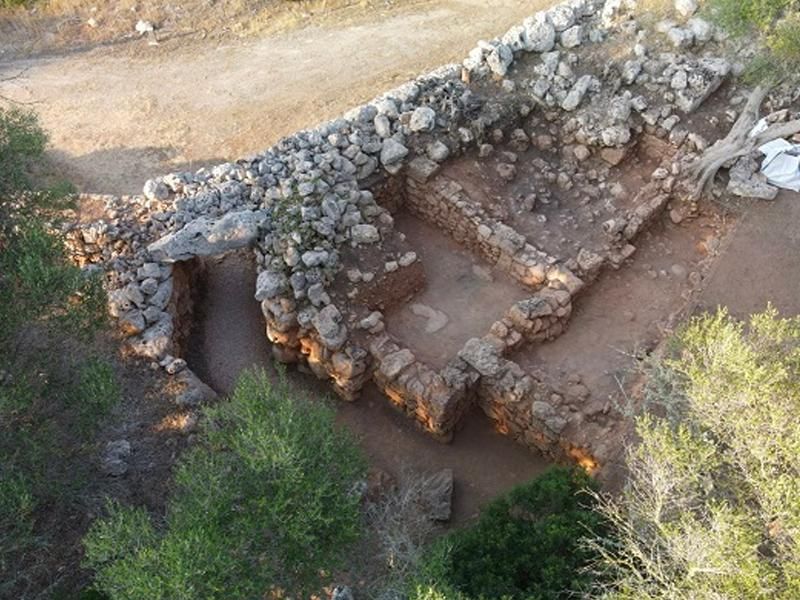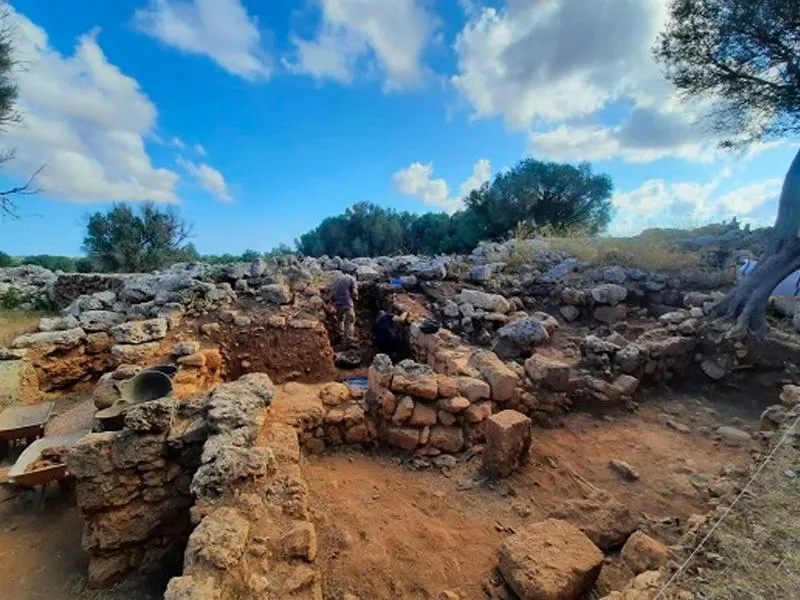Trove of Roman Weapons Unearthed at Ancient Settlement in Spain
Son Catlar, a Talayotic site on the Balearic Islands, is known for its well-preserved fortifications
:focal(415x339:416x340)/https://tf-cmsv2-smithsonianmag-media.s3.amazonaws.com/filer/fa/99/fa997e10-2ea6-41a6-b41b-027794dfa455/son_catlar.jpg)
Researchers surveying the ancient Talayotic settlement of Son Catlar in Menorca, Spain, have unearthed a cache of Roman military equipment dated to around 100 B.C.
As Antoni Agüera reports for Ultima Hora, scholars from the universities of Alicante, Murcia, Granada and Cadiz, as well as the Ciutadella Museum, discovered the trove earlier this month. Among the objects found at the site, which is located on one of Spain’s Balearic Islands, were projectiles, arrowheads, knives, surgical supplies and a bronze spatula.
Son Catlar is the largest Talayotic settlement in the Balearics. Surrounded by a monumental wall with a perimeter of nearly 3,000 feet, the site also boasts sentry boxes and square towers known as talayots, according to Unesco. These Bronze Age megaliths lend the prehistoric civilization its name.
This summer’s dig centered on a bent gateway that served as part of the settlement’s defense system against invaders. Per Heritage Daily, Roman soldiers who conquered and occupied the islands in the second century B.C.E. may have associated the entrance with Janus, the Roman god of beginnings and endings, time, duality, doors and passages. As Caillan Davenport wrote for the Conversation in 2017, the two-faced deity represented “the route through which one reached the other gods, even Jupiter himself,” essentially making him gatekeeper of the heavens.
“Roman soldiers were very superstitious and used to perform these rites,” says a statement from the University of Alicante’s Institute for Research in Archaeology and Historical Heritage (INAPH). “… The Romans gave a sacred value to the gates of the cities, and sealing one definitively would entail certain actions of a magical nature.”
Son Catlar’s inhabitants constructed the stone barrier between the fifth and fourth centuries B.C.E., reports Alba León López Mahón for La Vanguardia. The wall was built with a range of construction techniques, including cyclopean masonry. Named after the Cyclops—one-eyed giants from Greek mythology—this method found builders constructing walls “without mortar, using enormous stone blocks,” per Encyclopedia Britannica.
As the University of Alicante notes, locals refortified Son Catlar either in response to the Punic Wars, which took place between Rome and Carthage from 264 to 146 B.C.E., or the Roman conquest of the Balearic Islands around 123 B.C.E.
Per Encyclopedia Britannica, “[T]he islands were successively ruled by Carthaginians, Romans, Vandals, Moors, and Spaniards, all of whom have left their mark.”
The team’s excavations at Son Catlar have been ongoing since 2016. During previous digs, scientists investigated different phases of the wall’s construction, as well as specific sections of the fortification, including its north gate and bent gateway. Work is taking place as part of the university’s “Modular Project: Phoenician-Punic Architecture.”
Son Catlar, says dig leader Fernando Prados in the statement, is invaluable to researchers because “it provides a great deal of scope for studying the archaeology of conflict and war.”
/https://tf-cmsv2-smithsonianmag-media.s3.amazonaws.com/accounts/headshot/Isis_Davis-Marks_thumbnail.png)


/https://tf-cmsv2-smithsonianmag-media.s3.amazonaws.com/accounts/headshot/Isis_Davis-Marks_thumbnail.png)